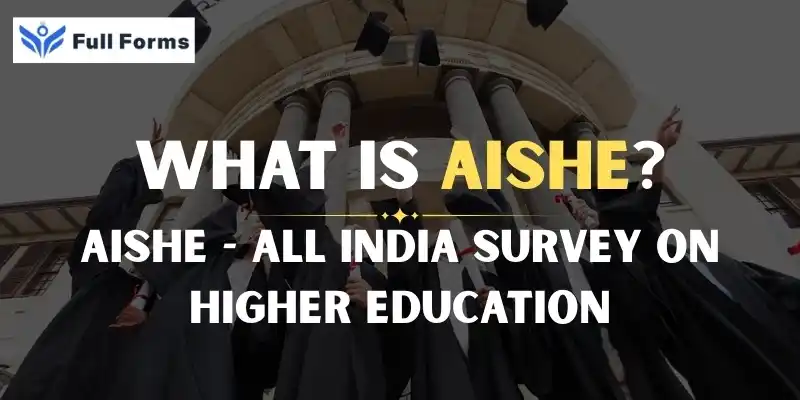All India Survey on Higher Education
(AISHE)

Description
All India Survey on Higher Education (AISHE) Watching Over India's Rising Education Scene
The key to development in any country is education. In India, higher education plays a very significant role in molding the future of students and also ensuring required adequate skilled manpower. Before improving the quality of education, an understanding of it is necessary: i.e., how many institutions are imparting it, the enrollments taking place, which courses have more takers, and where the changes have to be inculcated. This paper has tried to collect such details with the help of the All India Survey on Higher Education or AISHE.
Let us understand what AISHE is, the purpose behind conducting it, and how it helps in improving the education system of India.
What is AISHE?
It refers to the All India Survey on Higher Education initiated by the Ministry of Education, Government of India on an annual basis. This survey collects extensive data about the status and progress of higher education across the country.
Data includes:
The count of colleges and universities
Number of students enrolled
Number of faculty
Classes and subjects offered
Using tech at school
Colleges have buildings.
The survey has both government and private schools that give diploma, graduate, postgraduate, and PhD courses after high school.
The first AISHE happened in 2010–11. It has been done every year since then.
Why does AISHE matter?
The AISHE survey holds worth for many reasons:
- Helps plan
The survey data assists the government in making improved educational plans. For example if it is found from the survey that there are inadequate intakes of students in the existing science classes, new science colleges may be established or more scholarships in science provided.
An accurate teacher-student ratio, building status, and the course offering shall enable authorities to take measures towards better education quality.
Students, researchers, and education analysts may use it for research or writing purposes.
What Type of Data is Collected
AISHE collects various data such as
- Basic details of Universities, Colleges, and Stand-Alone Institutions
- Student Enrollment by gender, category (SC/ST/OBC), and level of the program
- Faculty information includes qualification, designation, and gender
- Exam Results in Pass Percentage
- laboratories, libraries, hostels, and wi-fi
- scholarships to students and other financial assistance to students
- use of Information and Communication Technology in the teaching process
This all information are filled by the Institutes/Universities/ Colleges through a special type of web portal i.e. AISHE Portal.
Who Operates AISHE
The survey is authorized by the Department of Higher Education in the Ministry of Education but data collection is physically carried out by
Nodal officers manage all the states and union territories. There are University Nodal Officers in every university. College Nodal Officers who transmit data at their colleges All data is critically reviewed before placing the final report.
Students get to see where most colleges or courses are and choose their place of study.
Teachers and researchers can use the data to update themselves on job trends thus improving teaching.
Colleges and universities get information on how others are doing and learn ways of improving.
Women enrollment has continuously increased.
The mode of learning is increasingly becoming online and distance education.
Technical and professional courses still attract the interest of the majority, meanwhile, there is growing interest in the arts and humanities.
The All India Survey on Higher Education is similar to a diagnosis.
It will give us a clear picture of the malaises and also prescribe the right track of treatment, in areas we are going wrong and those we need to improve further. Such a survey comes in very handy in a country like India where millions of young aspirants desire to pursue higher education.
AISHE is not merely a survey, it is a blueprint that will eventually unravel a more astute and erudite posterity of India.
As long as the government, schools, teachers, and students make an informed decision based on this data - our education system gains strength with every passing year.
